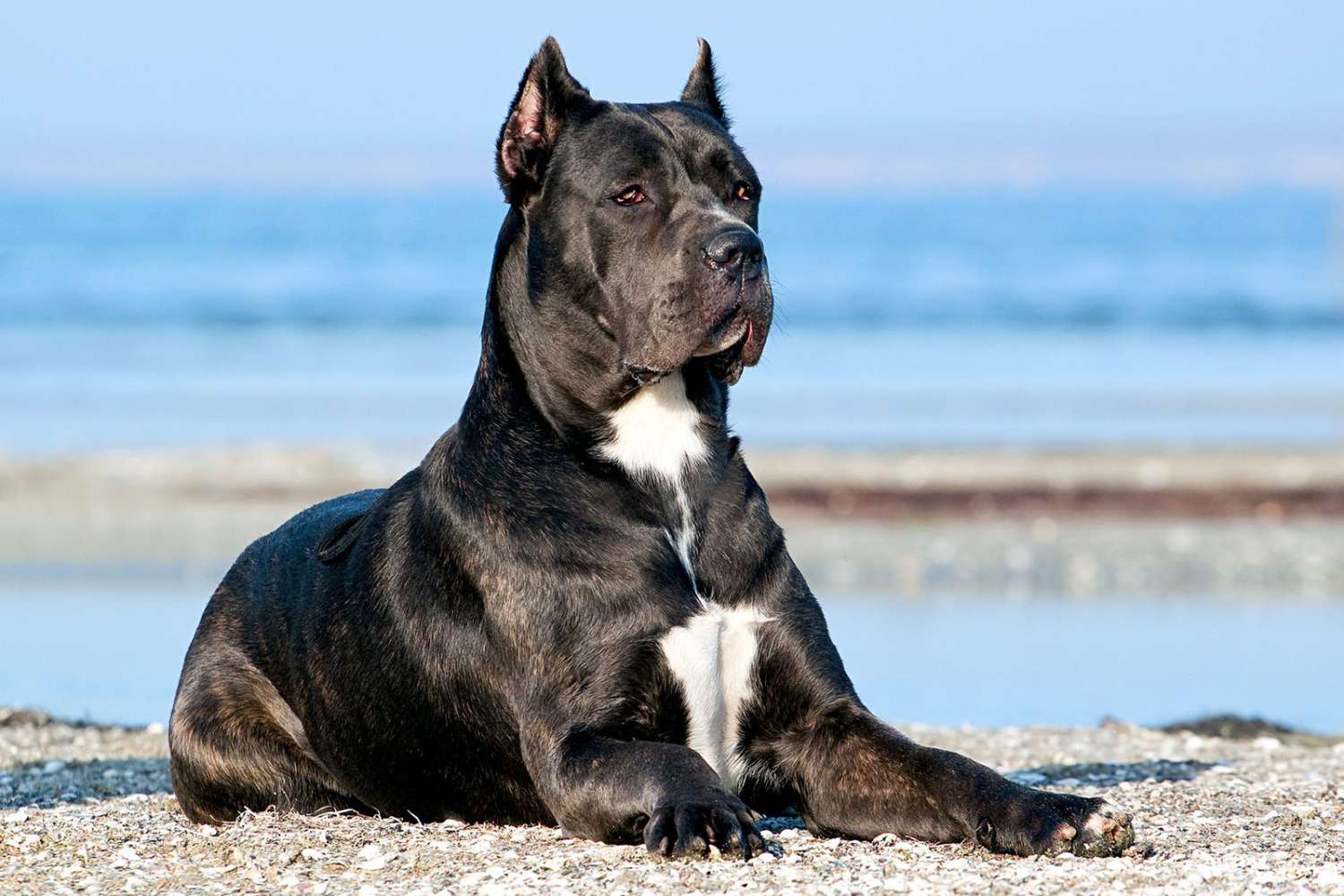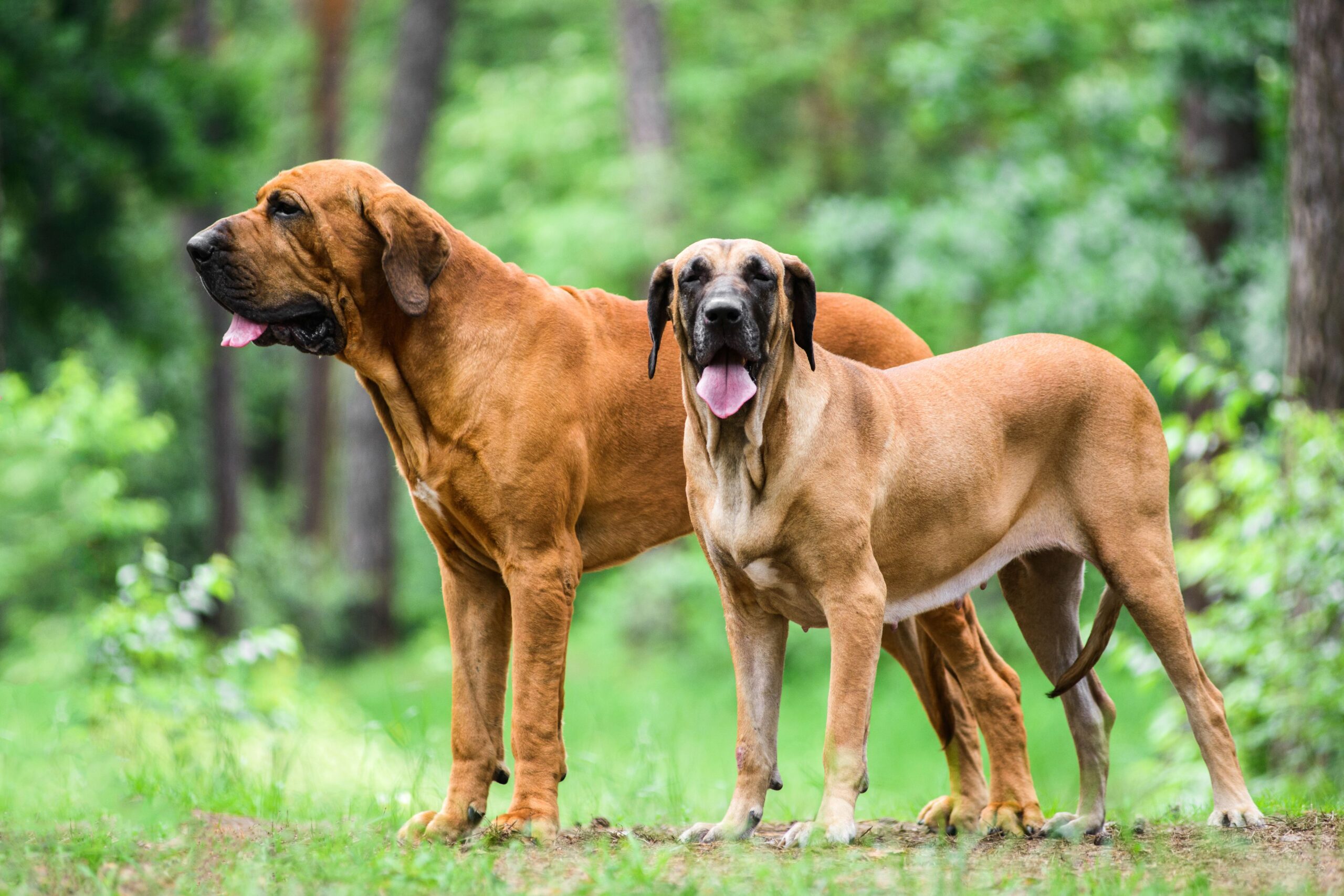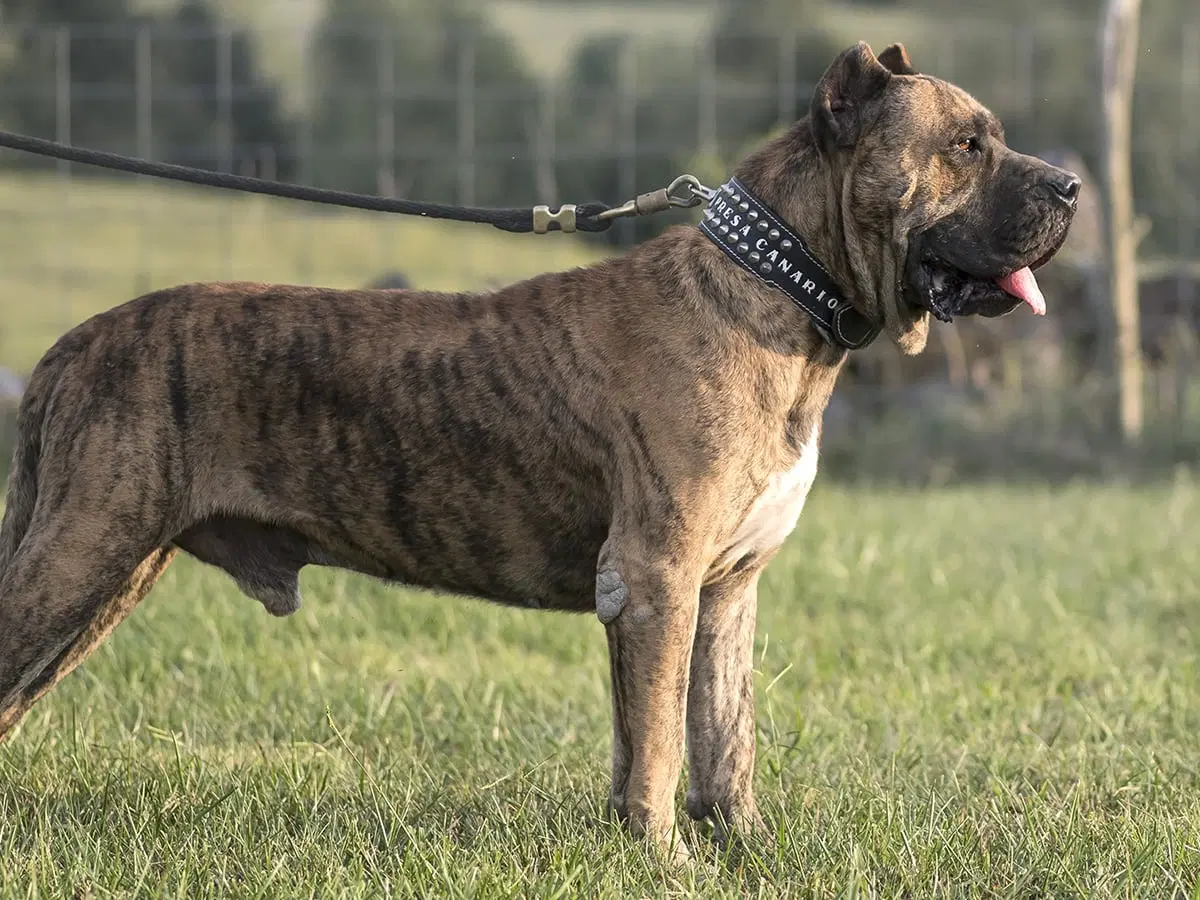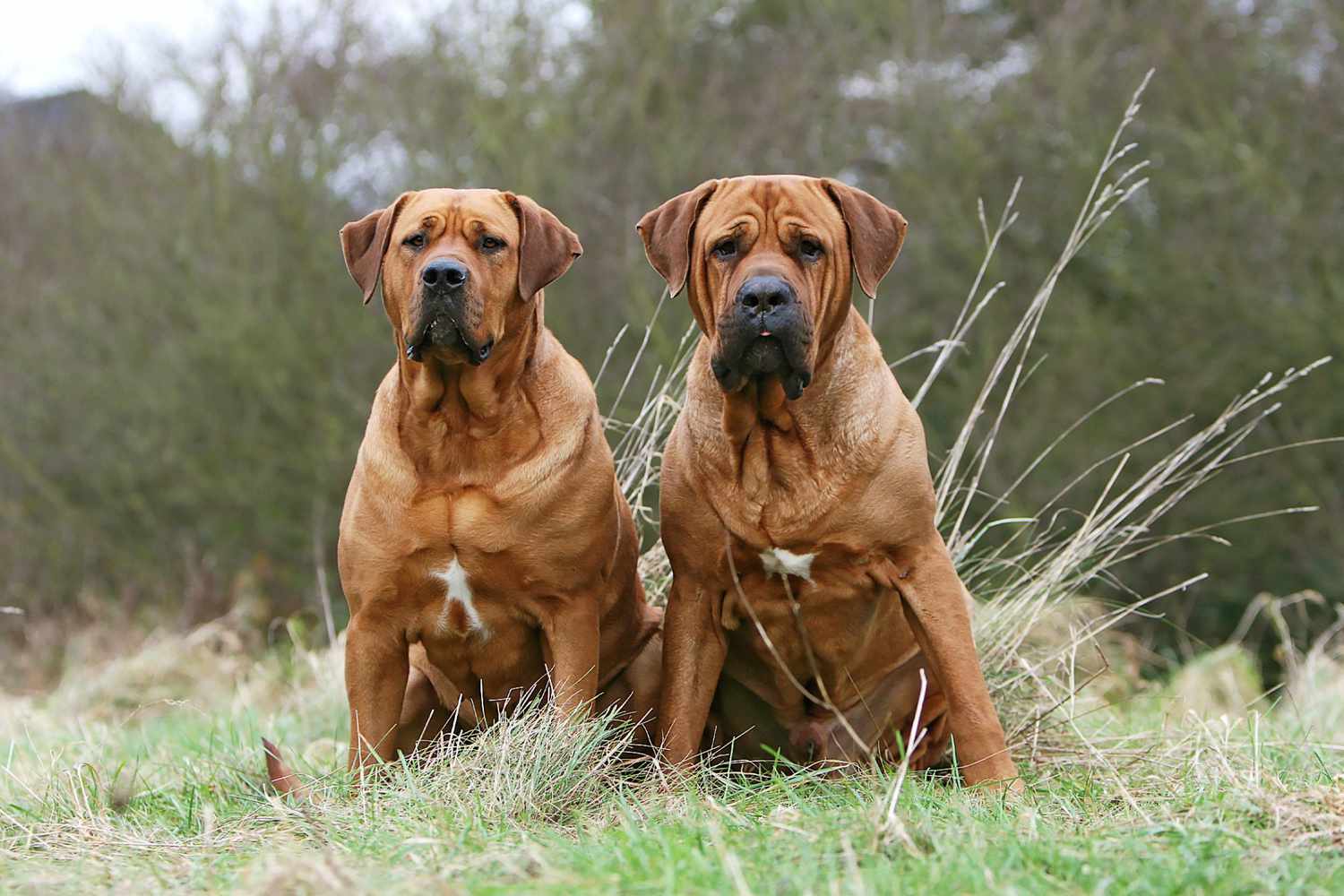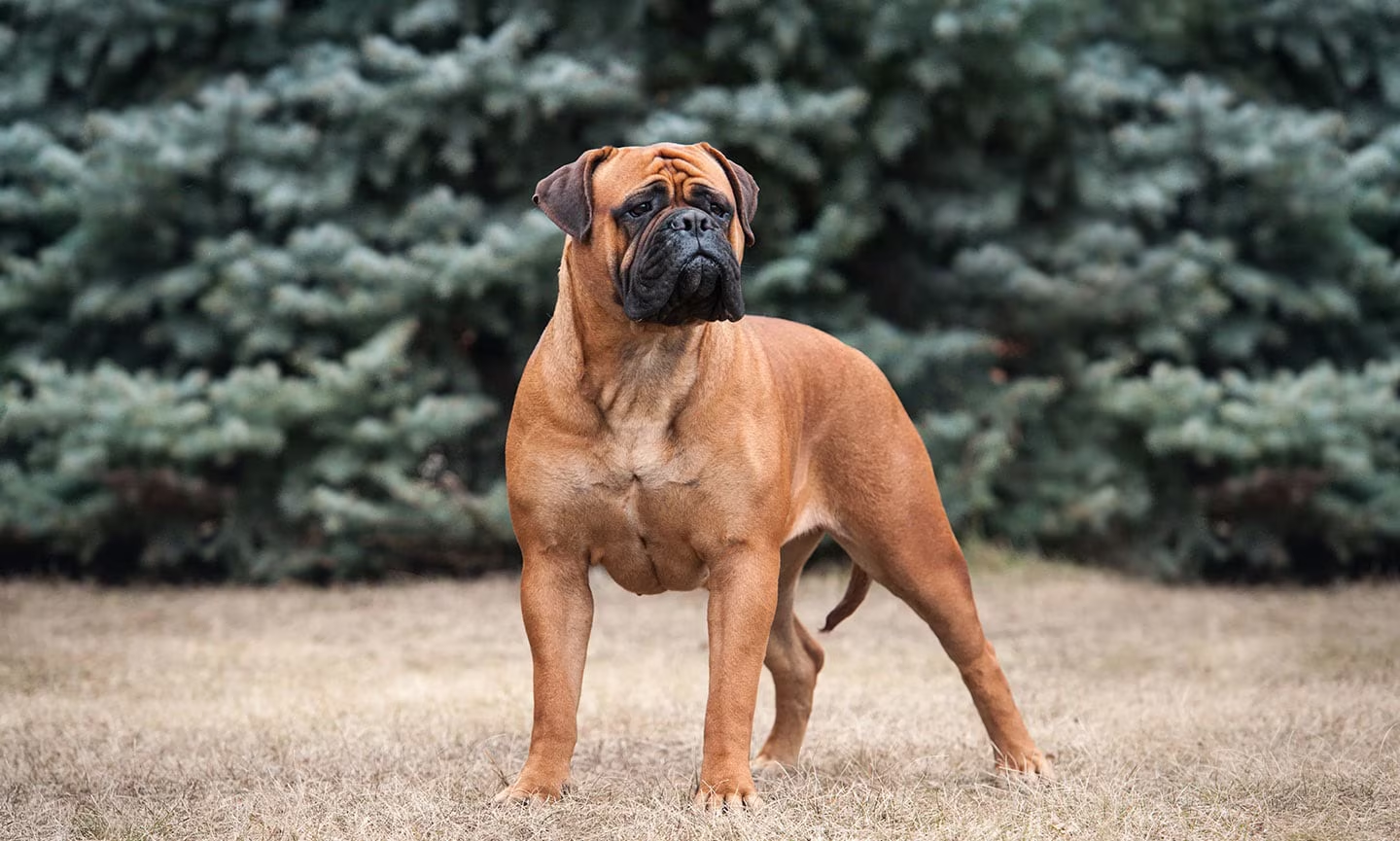The Magnificent Cane Corso: Not Just Another Pretty Face
Picture this: You’re walking down the street when you spot what appears to be a small horse with a dog collar. That, my friend, is probably a Cane Corso – Italy’s answer to the question “what if we bred a dog that looks intimidating enough to make burglars change careers?”
The first time I saw a Cane Corso in person, I literally stopped mid-sentence and stared. There’s something absolutely captivating about these dogs that goes beyond their imposing size. Maybe it’s those soulful eyes that seem to look right through you, or perhaps it’s the quiet confidence they exude without even trying. Whatever it is, these Italian masterpieces are turning heads and stealing hearts everywhere.
If you’re considering adding this majestic guardian to your family (or just fascinated by them), you’ve come to the right place. I’ve been obsessed with this breed for years, and I’m about to break down everything from their ancient Roman origins to what it’s really like having a 110-pound “lap dog” who believes your couch is their divine right. Let’s dive into the world of the Cane Corso – a breed that’s equal parts bodyguard, gentle giant, and comedic relief!
Ancient Roots: From Roman Battlefields to Your Living Room
The Cane Corso isn’t just another pretty face in the dog world – this breed comes with serious historical cred that dates back over two millennia. Talk about vintage!
Warriors of the Ancient World
The story begins in ancient Rome, where the ancestors of today’s Cane Corso served as war dogs alongside Roman legionnaires. These canine warriors were descendants of ancient Greek Molossian dogs – a type that was prized for its courage, strength, and loyalty. The Romans recognized these exceptional qualities and brought these dogs back to Italy, where they were crossbred with native Italian dogs to create an even more formidable companion.
The name itself tells you everything you need to know about their purpose: “Cane Corso” roughly translates from Latin as “bodyguard dog” or “guardian of the courtyard.” These weren’t just pets – they were working professionals with a very specific job description: protect at all costs.
From Battlefield to Farmland
As the Roman Empire faded into history, Cane Corsos transitioned from the battlefield to become invaluable all-purpose farm dogs throughout the Italian countryside, particularly in southern regions like Puglia. These versatile canines turned their talents to hunting wild boar, driving livestock, guarding property, and protecting family – basically the Swiss Army knife of the dog world.
For centuries, they were a fixture of rural Italian life, working alongside farmers in the traditional “mezzadria” system of share-cropping. Their powerful builds and intelligent, trainable nature made them ideal partners for the physically demanding work of pre-industrial farming.
Near Extinction and Revival
Like many traditional working breeds, the Cane Corso faced extinction in the mid-20th century. As agriculture became increasingly mechanized following World War II and the old share-cropping system collapsed in the 1960s, the need for these working dogs dramatically decreased. By the 1970s, the breed was perilously close to disappearing forever.
Thankfully, a group of dedicated Italian enthusiasts recognized the cultural and historical importance of the Cane Corso and launched a recovery program in the late 1970s. By carefully locating and breeding the few remaining dogs, they managed to save this ancient breed from oblivion. The Società Amatori Cane Corso (Cane Corso Society of Enthusiasts) was formed in 1983, and the breed was officially recognized by the Italian Kennel Club in 1994.
The first Cane Corsos arrived in America in 1988, but it wasn’t until 2010 that the American Kennel Club granted the breed full recognition. Since then, their popularity has skyrocketed, and they’ve climbed steadily in breed rankings – currently sitting in the top 25 most popular breeds in the US.
The Look: Imposing Elegance with a Side of Intensity
If dogs were superheroes, the Cane Corso would definitely be cast as the strong, silent type with a mysterious past and a heart of gold. Their physical appearance commands respect without saying a word.
Size and Structure: Athletic Power
Let’s address the elephant (or should I say, horse-sized dog) in the room – Cane Corsos are BIG. Males typically stand 25-27.5 inches at the shoulder and weigh between 99-110 pounds, with females slightly smaller at 23.5-26 inches and around 88-99 pounds. But it’s not just their size that impresses; it’s how they carry it.
Unlike some mastiff breeds that can appear somewhat lumbering, Cane Corsos are athletic and well-proportioned. Their bodies are muscular but elegant, combining strength with surprising agility. They have a rectangular build – slightly longer than tall – with a deep chest, powerful shoulders, and a level back that slopes slightly at the croup.
These aren’t just pretty muscles for show, either. Historically bred for hunting wild boar and guarding property, Cane Corsos needed both power and agility. This functional heritage is evident in their movement, which is effortless and elastic despite their substantial size.
That Distinctive Head
If there’s one feature that truly defines the Cane Corso, it’s their magnificent head. Large and imposing, the Corso head is a study in power and intelligence. The broad skull is flat between the ears with a slightly wrinkled forehead, and the muzzle is square, deep, and notably shorter than the skull (though not as short as some brachycephalic breeds).
Their eyes are almond-shaped and set slightly forward, with an alert, attentive expression that can range from inquisitive to intense, depending on the situation. Eye color varies with coat color, ranging from dark brown to amber or even blue in some dogs.
Traditionally, ears were cropped short in a triangular shape, reflecting their working heritage (ear cropping was originally done to prevent injuries during hunting or fighting). Today, many Corsos maintain their natural ears, which are medium-sized, triangular, and hang close to the cheeks when at rest.
Coat and Colors: Simple but Striking
Cane Corsos sport a short, stiff coat that’s dense and slightly glossy. While it’s low-maintenance in terms of grooming, it still manages to look impressive – like the canine equivalent of a perfectly tailored Italian suit.
The breed comes in several colors: black, gray (ranging from light gray to slate), fawn (from light tan to deep red), red, and brindle (tiger-striping on any of the base colors). Many Corsos have a black or gray mask on their face that doesn’t extend past the eyes. Small white patches on the chest, chin, and toes are permitted but not preferred in show dogs.
The sleekness of their coat highlights their muscular physique, giving them a look that’s simultaneously elegant and powerful – as if they just stepped out of a Renaissance painting and into your living room.
Temperament: The Soul of a Guardian, the Heart of a Family Dog
Behind that intimidating exterior beats the heart of a complex, nuanced dog with a temperament as fascinating as their history. Understanding the Cane Corso’s personality is key to appreciating what makes these dogs so special.
The Guardian Spirit
If I had to distill Cane Corso temperament into one word, it would be “discerning.” These aren’t dogs that blindly love everyone or bark at everything that moves. Instead, they carefully assess situations and respond accordingly. Their guardian instinct runs deep – they don’t need to be trained to protect; it’s hardwired into their DNA after centuries of service as property guardians.
The Corso’s protective nature is typically characterized by watchful alertness rather than aggressive displays. They’re naturally reserved with strangers but not fearful or reactive without cause. Instead, they prefer to observe new people carefully before deciding if they pose any threat. Once they’ve determined someone is welcome, they’ll typically accept them with calm dignity.
This instinctive discernment makes them excellent watchdogs who don’t waste energy on false alarms. Unlike some breeds that bark incessantly at every passing squirrel, Cane Corsos tend to be relatively quiet – when they do bark, it’s usually for a good reason.
Family Bonds: Loyalty Above All
With family, Cane Corsos reveal their true nature as devoted, affectionate companions. They develop profoundly deep bonds with their people and are particularly renowned for their gentleness with children in their family. Many Corso owners describe an almost uncanny attunement to their emotions – these dogs seem to sense your feelings before you’ve even fully registered them yourself.
This breed thrives on being included in family activities. They’re not content to be relegated to the backyard – they want to be wherever you are, participating in whatever you’re doing (even if that’s just binge-watching Netflix on the couch). Corsos are known for becoming particularly attached to one family member while still being loyal to all.
Their affection isn’t typically expressed through exuberant displays like jumping or excessive licking. Instead, a Cane Corso shows love through constant presence, leaning against you, or quietly following you from room to room. It’s a more subtle, dignified form of devotion that perfectly matches their noble bearing.
Intelligence and Trainability: The Thinking Dog
Cane Corsos are highly intelligent dogs with an impressive capacity for learning and problem-solving. They’re keenly aware of their surroundings and quickly pick up on patterns and routines. This intelligence, combined with their eager-to-please attitude toward their family, makes them highly trainable for the right handler.
That said, Corsos aren’t mindless robots waiting for commands. Their history as semi-independent working dogs has equipped them with decision-making abilities and a certain amount of autonomy. They’re thinking dogs who will assess a situation and sometimes make their own judgment calls – a quality that made them valuable as guardians who needed to act without constant human direction.
This intelligence means they need mental stimulation as much as physical exercise. A bored Cane Corso can become destructive or develop behavioral issues, not out of malice but simply from lack of appropriate outlets for their considerable mental energy.
The Serious Side
Cane Corsos tend to be more serious and less playful than some breeds, particularly as they mature. While puppies and young dogs will certainly play and be silly, adult Corsos often develop a more dignified, composed demeanor. They might enjoy a game of fetch or tug-of-war, but they’re unlikely to be the class clown of the dog park.
This seriousness extends to their work ethic – when given a job to do, whether it’s formal protection work, agility training, or just keeping an eye on the kids in the backyard, they approach it with focus and dedication. It’s this quality that makes them excel in various working roles, from therapy work to search and rescue.
However, don’t mistake their seriousness for lack of personality! Corso owners often describe their dogs’ surprising moments of silliness and their distinctive “talking” – a range of snorts, groans, and “roo-roo” vocalizations that sound like they’re trying to have a conversation.
Training and Socialization: Shaping Your Guardian
Let’s be real – a powerful dog like the Cane Corso needs proper training and socialization. This isn’t negotiable; it’s an absolute must for responsible ownership. The good news? Their intelligence and desire to work with you make training a rewarding journey when approached correctly.
Start Early, Be Consistent
Socialization should begin the moment your Cane Corso puppy comes home and continue throughout adolescence. During the critical socialization window (8-16 weeks), expose your puppy to a wide variety of people, places, animals, sounds, and situations. Pay particular attention to creating positive experiences with diverse types of people so your Corso learns to differentiate between normal situations and genuine threats.
Well-structured puppy classes can be invaluable for controlled socialization and basic training foundations. Look for trainers who understand large guardian breeds and use positive, reward-based methods. Early positive experiences set the stage for a well-adjusted adult dog who can confidently navigate the world without inappropriate suspicion or reactivity.
Training Approach: Respect and Leadership
Cane Corsos respond best to training that respects their intelligence and dignity. Harsh corrections or dominance-based methods typically backfire with this sensitive breed, creating resistance rather than cooperation. Instead, focus on clear communication, consistency, and positive reinforcement for desired behaviors.
That said, Corsos need confident leadership. This doesn’t mean intimidation or force – it means being clear, fair, and consistent in your expectations. A Corso who sees you as a trustworthy leader will move heaven and earth to please you; one who doesn’t respect your guidance will make their own decisions, which may not align with your preferences!
Keep training sessions engaging and varied to maintain their interest. Corsos excel with handlers who can make training feel purposeful rather than repetitive. Incorporate real-life skills into their training regimen, and help them understand why certain behaviors matter.
Essential Skills for Success
Beyond basic obedience (sit, stay, come), focus on these critical skills for your Cane Corso:
- Rock-solid recall: A reliable “come” command could be lifesaving in an emergency
- Leash manners: A 100+ pound dog pulling on leash is unsafe for everyone
- “Place” or boundary training: Teaching your Corso to go to and stay in a designated spot
- Controlled greetings: Your Corso must learn to remain calm when visitors arrive
- Leave it/drop it: Essential for safety and preventing resource guarding
Additionally, consider training that gives your Corso a job, such as advanced obedience, tracking, nosework, or even therapy work for well-socialized individuals. These breeds thrive when they have a purpose that engages their mind and body.
The Adolescent Challenge
Like many large breeds, Cane Corsos go through a challenging adolescent period, typically between 6-18 months, when their size and strength increase while their brain is still developing. During this time, they may test boundaries and appear to “forget” previously learned behaviors.
This is when consistent training becomes even more important. Many owners make the mistake of relaxing training efforts once their puppy knows basic commands, only to find themselves with a 90-pound adolescent who suddenly seems to have selective hearing!
Maintain structured training throughout this period, reinforcing boundaries while providing appropriate outlets for energy and mental stimulation. Most Corsos mature into well-mannered adults by 2-3 years of age if given consistent guidance during these formative years.
Health and Care: Maintaining Your Majestic Guardian
Keeping your Cane Corso healthy requires understanding their specific needs and potential health concerns. With proper care, these magnificent dogs typically live 9-12 years – relatively long for a giant breed.
Common Health Considerations
Like all purebred dogs, Cane Corsos can be prone to certain genetic health issues:
- Hip and elbow dysplasia: Joint malformations that can lead to arthritis and mobility issues
- Heart conditions: Including dilated cardiomyopathy
- Eyelid abnormalities: Such as entropion or ectropion
- Bloat/gastric torsion: A life-threatening emergency where the stomach twists
- Idiopathic epilepsy: Seizure disorders without an identifiable cause
Working with a reputable breeder who conducts appropriate health testing helps reduce the risk of these conditions. For those adopting rescue Corsos, establishing a relationship with a veterinarian experienced with large breeds is especially important for monitoring potential issues.
Nutrition: Fueling Your Gentle Giant
Nutrition plays a crucial role in the health and development of your Cane Corso. During puppyhood (which lasts much longer in large breeds), feed a high-quality large-breed puppy formula that supports appropriate growth rates. Rapid growth in large breeds can contribute to developmental orthopedic problems, so controlled growth is essential.
Adult Corsos typically thrive on premium large-breed formulas that support joint health and weight management. Divide daily portions into at least two meals to reduce the risk of bloat, and avoid exercise immediately before and after meals.
Weight management is critically important – excess pounds put tremendous stress on joints and internal organs, potentially shortening lifespan. You should be able to feel (but not prominently see) your Corso’s ribs, and they should have a visible waist when viewed from above.
Exercise: Meeting Physical and Mental Needs
Cane Corsos require regular exercise to maintain physical and mental health, though their needs are moderate compared to high-energy breeds. For adult Corsos, 30-60 minutes of purposeful activity daily is typically sufficient, with a focus on controlled, meaningful exercise rather than excessive running or jumping that could stress their joints.
Exercise needs vary by age:
- Puppies (under 18 months): Multiple short walks and play sessions daily, avoiding high-impact activities while growth plates are still closing
- Adults (2-6 years): Daily walks, structured play, and training activities that engage both mind and body
- Seniors (7+ years): Continued daily activity adjusted for comfort level and any mobility issues
Mental exercise is just as important as physical activity for this intelligent breed. Training sessions, puzzle toys, scent games, and other brain-engaging activities help prevent boredom and the behavioral issues that can result.
Grooming: Minimal But Necessary
The Cane Corso’s short coat is relatively low-maintenance, requiring just weekly brushing with a rubber curry brush or grooming mitt to remove dead hair and distribute skin oils. They do shed, with seasonal increases typically in spring and fall, but it’s manageable with regular grooming.
Other routine care includes:
- Checking and cleaning ears weekly to prevent infections
- Trimming nails regularly (every 3-4 weeks for most dogs)
- Brushing teeth frequently for dental health
- Cleaning facial wrinkles as needed to prevent irritation or infection
Bathing can be limited to every 6-8 weeks unless they get particularly dirty. More frequent bathing can strip natural oils and lead to skin issues. Use a gentle dog shampoo formulated for sensitive skin.
Living With a Cane Corso: Real Talk
Let’s get practical about what it’s really like sharing your home and life with a Cane Corso. These aren’t just any dogs – they’re a significant commitment in terms of time, space, and resources.
Space and Lifestyle Considerations
While Cane Corsos don’t need acres of land, they do require adequate space to move comfortably both inside and outside. A securely fenced yard provides a safe area for exercise and bathroom breaks. Fencing should be tall (minimum 6 feet) and sturdy, as Corsos can be determined escape artists if they decide something outside the yard requires their attention.
Inside the home, they need room to maneuver without constantly knocking things over. Their size means they take up significant space whether lying in the living room or navigating hallways. Tight spaces and steep stairs can be challenging for these large dogs, especially as they age.
More important than physical space is lifestyle compatibility. Cane Corsos form intense bonds with their families and don’t do well with prolonged solitude. They’re not suited to homes where they’ll be left alone for extended periods on a regular basis. If your work schedule keeps you away from home for 10+ hours daily, this probably isn’t the breed for you unless you can arrange for dog walkers or daycare.
Family Compatibility: Not for Everyone
Cane Corsos can thrive in various household configurations, but they’re not the right fit for every family. They typically do best with:
- Experienced dog owners familiar with positive training methods
- Active families who can provide adequate exercise and mental stimulation
- Households with older children who understand how to respectfully interact with dogs
- People who appreciate a protective, loyal companion with a serious demeanor
They may not be ideal for:
- First-time dog owners unprepared for the training needs of a large guardian breed
- Families with very young children who might be accidentally knocked over
- Those seeking a highly social, “everyone’s best friend” type of dog
- People unable to provide consistent leadership and boundaries
With children, proper supervision is always necessary due to the dog’s size and strength, even though well-socialized Corsos are typically gentle and patient with kids in their family.
The Financial Reality
Large dogs come with larger expenses. Prospective Cane Corso owners should prepare for costs that exceed those of average-sized breeds:
- Quality food: $100-150+ monthly for premium large-breed formulas
- Veterinary care: Regular check-ups plus emergency care can be substantial (procedures often cost more for large dogs due to increased medication dosages)
- Training: Professional guidance is often necessary, especially for first-time owners of guardian breeds
- Equipment: Larger, sturdier beds, crates, collars, and other accessories all come with premium pricing
Pet insurance is worth serious consideration for Cane Corso owners. Emergency veterinary care for a dog of this size can quickly become extremely expensive, and insurance can help manage unexpected medical costs.
Finding Your Cane Corso: Making a Responsible Choice
If you’ve decided a Cane Corso is the right breed for you, the next step is finding your perfect match. Whether adopting or purchasing from a breeder, making an informed, responsible choice is crucial.
Reputable Breeders: Worth the Wait
Finding a reputable Cane Corso breeder requires research and patience. Ethical breeders focus on health, temperament, and breed preservation rather than profit. They typically:
- Conduct comprehensive health testing on breeding stock (hip/elbow evaluations, cardiac screening, eye exams)
- Raise puppies in a home environment with early socialization
- Limit breeding frequency and number of litters
- Ask detailed questions about your lifestyle, experience, and plans for the puppy
- Provide lifetime support and guidance
- Require spay/neuter contracts for pet-quality puppies
- Take back any dog they’ve bred if the owner can no longer keep it
Expect to pay $1,800-3,500 for a well-bred Cane Corso puppy from health-tested parents. While this may seem expensive, it’s an investment in a healthier dog and potentially fewer medical issues down the road.
Perhaps more importantly, be prepared to wait. Responsible breeders don’t always have puppies available and may have waiting lists for upcoming litters. This wait is worth it for a puppy with the best possible start in life.
Rescue and Adoption: Saving a Life
Adopting a Cane Corso from a rescue organization or shelter is a wonderful option that gives a deserving dog a second chance. Breed-specific rescues specialize in Cane Corsos and Corso mixes, carefully assessing dogs before placement to match them with appropriate homes.
Advantages of adoption include:
- Lower initial cost (typically $300-600 adoption fee)
- Many adult dogs are already house-trained and have basic obedience
- Rescues can often provide insight into a dog’s personality and needs
- The satisfaction of providing a loving home to a dog in need
When adopting, be prepared to discuss your living situation, experience with dogs, and how you plan to care for a giant breed. Good rescues want to ensure their dogs go to appropriate, permanent homes.
Red Flags to Avoid
Whether adopting or purchasing, watch for these warning signs:
- Breeders advertising “rare” colors not standard for Cane Corsos
- Claims of “oversized” or “giant” Corsos far exceeding breed standards
- Multiple litters available at once or always having puppies available
- Unwillingness to show you the puppies’ living conditions or meet the mother
- No health testing or guarantees
- Pressure to decide quickly without asking questions
Conclusion: Is a Cane Corso Your Perfect Match?
After diving deep into the world of the Cane Corso, one thing is clear: these aren’t just dogs; they’re a lifestyle choice and a long-term commitment to a complex, magnificent breed with specific needs and extraordinary qualities.
The ideal Cane Corso owner is someone who appreciates the breed’s protective nature without exploiting it, who understands that proper training and socialization are non-negotiable responsibilities, and who values a loyal, discerning companion over a social butterfly.
If you’re drawn to the Corso’s noble bearing and ancient heritage, if you’re willing to invest time in training and socialization, and if you’re prepared for the practical realities of living with a large guardian breed, you might just find that a Cane Corso is the most rewarding canine partnership you’ll ever experience.
These dignified guardians aren’t for everyone – and they shouldn’t be. Their power, intelligence, and protective instincts demand responsible ownership. But for the right person or family, a well-bred, properly trained Cane Corso offers an unparalleled combination of protection, loyalty, and companionship that’s truly something special.
Just be prepared to explain to guests why your coffee table has been permanently claimed by 110 pounds of snoring Italian nobility. Trust me – it’s a small price to pay for having your very own bodyguard with a heart of gold.
